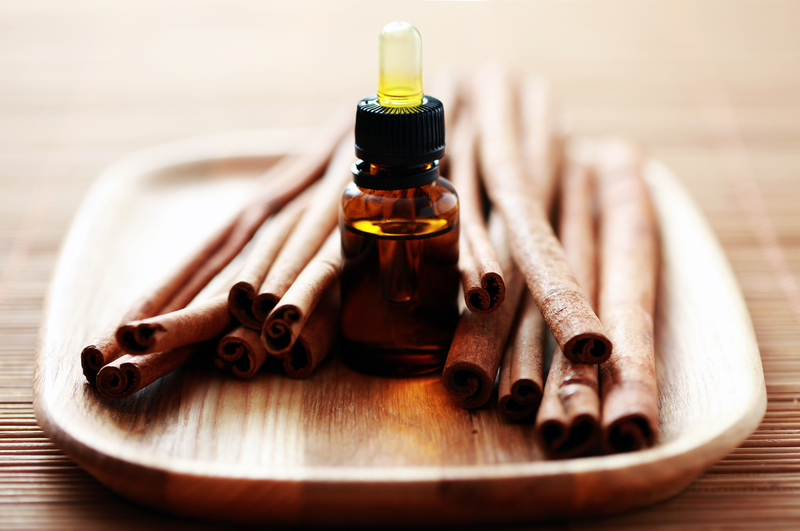Ultimate Guide: Keeping Your Enamel Oven Trays Pristine
Posted on 21/05/2025
Ultimate Guide: Keeping Your Enamel Oven Trays Pristine
Enamel oven trays are a staple in many modern kitchens thanks to their superior heat resistance, durability, and stylish finish. However, to keep these handy bakeware items pristine and long-lasting, proper care and maintenance are essential. Welcome to our ultimate guide on keeping your enamel oven trays pristine. You'll learn cleaning tips, best practices, and maintenance secrets that will help you get the best performance - and the longest life - from your enamel trays.
Why Choose Enamel Oven Trays?
Enamel-coated oven trays are popular in contemporary kitchens for several reasons:
- Non-reactive Surface: Enamel does not react with acidic or alkaline foods, making it perfect for versatile cooking.
- Ease of Cleaning: The smooth, glass-like coating prevents foods from sticking and makes cleaning easier.
- Durability: Enamel trays can withstand high oven temperatures and resist scratches and rust.
- Attractive Appearance: The glossy finish adds style to your bakeware collection and kitchen decor.
Despite these advantages, maintaining pristine enamel oven trays requires knowledge and the right approach. Let's dive into everything you need to know about keeping your trays in top condition.

The Science Behind Enamel Coating
Understanding what makes enamel trays special starts with their construction:
- Enamel is a vitreous, glass-like coating fused onto metal (often steel or cast iron) at high temperatures.
- This creates a hard, non-porous surface that is resistant to stains, corrosion, and abrasion.
- However, the glassy layer can chip or crack under heavy impact or rapid temperature changes, so some care is needed.
Essential Precautions for Pristine Enamel Oven Trays
Preserving the pristine condition of your enamel oven trays starts with correct usage and routine care:
- Avoid Metal Utensils: Use wooden, silicone or plastic spatulas to prevent scratching.
- Never Cut Food Directly: Always slice and dice your food on a cutting board, not directly on the tray.
- Manage Temperature: Don't expose the tray to sudden temperature changes (such as placing a hot tray under cold water) to avoid cracks.
- Store Properly: Stack with care, using a soft liner or cloth between trays to prevent chips.
- Regular Cleaning: Clean after every use to avoid stubborn stains and build-up.
How to Clean Enamel Oven Trays
Proper cleaning of enamel oven trays helps maintain their shine and hygiene. Here are expert-approved methods:
Everyday Cleaning Routine
- Let the tray cool: Always wait until your oven tray is at room temperature to prevent thermal shock.
- Handwash with mild detergent: Use warm water, a soft sponge, and gentle soap. Avoid scouring pads or abrasive cleaners.
- Rinse thoroughly: Ensure all soap residue is gone to preserve the integrity of the enamel coating.
- Dry with a soft towel: Prevent water spots by drying completely before storage.
Dealing with Stubborn Stains and Burnt-on Food
Occasionally, even the best cooks encounter baked-on, stubborn grime. Don't panic! Here's a step-by-step approach:
- Soak in warm, soapy water: Allow the tray to soak for at least 30 minutes. For tougher residue, extend the soak overnight.
- Use a paste of baking soda and water: Apply the paste to stained areas and let it sit for 15-20 minutes before gently scrubbing with a non-abrasive sponge.
- Try white vinegar: Pour white vinegar on the affected area, allow it to fizz with baking soda, then rinse clean.
- Repeat if necessary: Some stains may require multiple treatments, especially if they are old or carbonized.
What Not To Do: Top Care Mistakes with Enamel Oven Trays
To keep your enamel baking trays pristine, *avoid* these common mistakes:
- No dishwasher: High temperatures and strong detergents in dishwashers may eventually dull or damage the enamel coating.
- No harsh chemicals: Avoid bleach or other aggressive cleaners that can erode the enamel glaze.
- No steel wool: Steel wool or abrasive scrubbing pads can cause micro-scratches, leading to further staining and eventual damage.
- Don't use as a broiler pan: Direct flames or intense broiler heat can lead to circular cracks in the enamel coating.
Natural and DIY Cleaning Solutions
When it comes to keeping your enamel oven trays pristine, natural cleaning solutions are often best. They're safe, eco-friendly, and gentle on enamel. Here are a few recipes:
- Baking Soda and Lemon Paste: The combination lifts stains and neutralizes odors without scratching.
- Vinegar and Salt: Sprinkle salt on stubborn residue, add vinegar and let it sit. Scrub softly with a nylon brush for shiny results.
- Hydrogen Peroxide & Baking Soda: For tough stains, mix the two to form a gentle foaming cleaner.
Deep Cleaning: Restoring Older or Heavily-Used Enamel Trays
With prolonged use, your enamel oven trays may develop stains that regular cleaning can't handle. Follow these steps for a deep clean:
- Fill tray with hot water and a splash of vinegar.
- Add two tablespoons of baking soda, let it fizz, then soak for one hour.
- Gently scrub with a soft-bristle brush.
- Rinse and dry thoroughly.
- If stains persist, repeat or use an enamel-safe specialty cleaner.
Note: *Never use oven cleaner on enamel trays* as it may etch the enamel surface.
Preventative Maintenance for Pristine Oven Trays
A little prevention goes a long way in keeping your enamel oven trays looking new:
- Line trays with parchment or silicone mats: This creates a barrier that prevents burns, stains, and baked-on food.
- Lightly oil your tray before baking: A thin coat of oil makes cleaning easier and helps protect the glaze.
- Inspect for chips: Occasionally check for chips or cracks. Retire any significantly damaged trays--flakes of enamel can pose a health hazard.
FAQ: Pristine Enamel Oven Tray Care
- Can I put enamel trays in the dishwasher? While some manufacturers claim their trays are dishwasher-safe, regular machine washing can dull the shine and may weaken the enamel. Hand washing is always preferred.
- How do I remove rust stains from enamel trays? True enamel should not rust, but any exposed metal (from chips) may. Treat these areas with baking soda and a touch of vinegar, then thoroughly dry to prevent further corrosion. If rust persists, it's time to replace the tray.
- Are enamel oven trays non-stick? While enamel has some natural non-stick properties, it's not as slick as specialty non-stick coatings. Regular oiling or lining is recommended for particularly sticky recipes.
- Can I use enamel trays on the stovetop? Unless specifically labeled as 'stovetop-safe', avoid direct heat. Enamel trays are designed for oven use only.
- Is chipped enamel dangerous? If the underlying metal is exposed, discontinue use for food preparation to avoid contamination and potential ingestion of shards.
Product Recommendations: Best Enamel Oven Trays
When shopping for new enamel trays, look for:
- Thick, even enamel coating - minimizes risk of chipping.
- Reputable brands - such as Le Creuset, Falcon Enamelware, or MasterClass.
- Dishwasher resistance - for occasional deep cleaning.
- Stainless steel core - for improved rust resistance.
Common Problems and Solutions
Even the best cared-for trays can develop issues. Here is how to solve them:
- Stubborn Burnt Marks: Make a paste of baking soda and water. Apply, wait for 30 minutes, then gently rub with a soft sponge.
- Discoloration: Regular cleaning with vinegar and baking soda can help restore white enamel's brightness.
- Chipped Enamel: Small chips on non-food surfaces can be touched up with heat-proof enamel paint, but replace it for severe damage.
- Lingering Odors: Rinse with lemon water or lightly bake with slices of lemon on the tray.

Expert Tips for Keeping Your Ovenware Like New
- Always preheat with care: Place oven trays in a preheated oven to avoid rapid temperature shock.
- Cool before washing: Prevent cracks by ensuring trays are at room temperature before submerging in water.
- Avoid stacking heavy pots: Protect the enamel surface from chipping or scratching during storage.
- Label and separate your bakeware: If you use colored enamel trays for certain foods (like fish or desserts), designate them to prevent cross-flavoring.
Conclusion: Keeping Your Enamel Oven Trays Pristine for Years
A little care every time you use your enamel oven tray pays off with years of reliable service. Whether you're a home cook or a baking enthusiast, the glassy, hygienic finish of enamel wears beautifully with preventive care and the right cleaning routine. Remember, never use harsh abrasives, avoid sudden temperature changes, and clean promptly after each use.
Ready for your next bake? By following these tips, your enamel oven trays will remain spotlessly clean, chip-free, and safe for years of delicious meals!
Share this ultimate guide on keeping your enamel oven trays pristine with fellow food lovers and enjoy sparkling trays every time.




